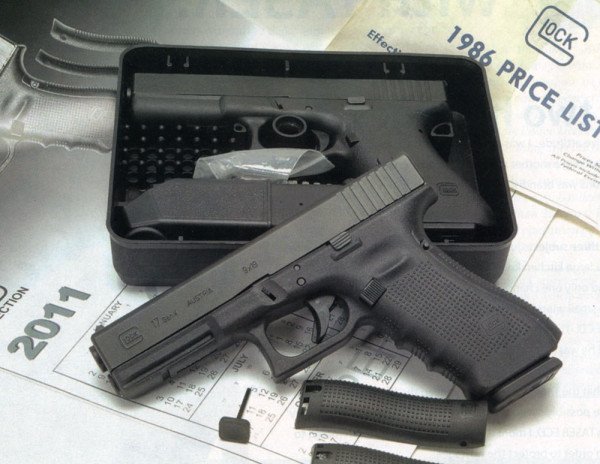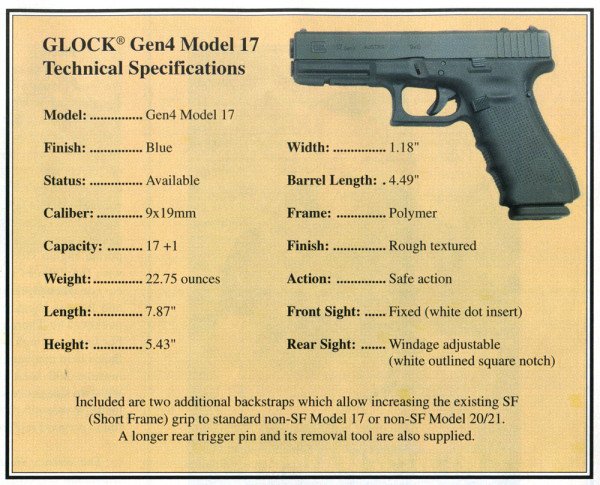Editor’s note: This Gen4 Glock 17 review was completed when the pistol was brand new. Since then, the company expanded the Glock 4th Gen line and even created a new series of pistols. The 4th Generation of Glock pistols has proved very popular in law enforcement.
The “Gen4” is short for Fourth Generation of the GLOCK 17 pistol, whose formal existence began in 1980 as a result of Gaston Glock’s pistol winning the Austrian Army’s field trials held to find a new handgun for their military forces.
After this success, Gaston Glock early on adopted the term GLOCK Perfection, intending this to be a never-ending goal of making and selling the very best handguns possible. To support this, any modifications to the GLOCK gun were simply integrated into ongoing manufacture.
Officially, until the Gen4 Glock 17, there was no formal recognition of generational changes to the design.
Buying Recommendation
The Glock 17 Gen4 can be purchased from many places. I’ve had very good service from these dealers:
Previous Generations
For the rest of us GLOCK 17 devotees, we have long recognized that there are three generations of GLOCK pistols. Not including some model variants, First Generation guns have a finely pebbled grip area.
Second Generation guns have “grenade checkering” on the front strap and the backstrap.
Third Generation guns added finger placement ridges on the front strap and a dished out thumb rest on the top of the side panels, along with an accessory rail located on the dustcover. As far as internal changes, I doubt anyone has a complete listing. I even doubt that GLOCK Gmbh itself has a formal list.
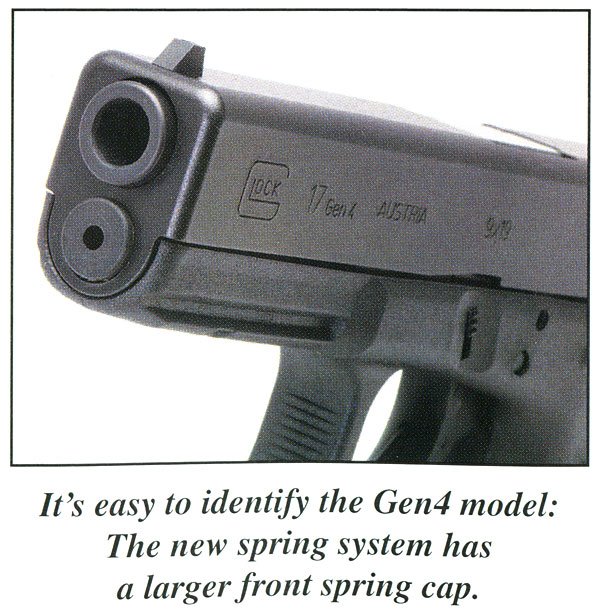
The Gen4 sample discussed here is the Model 17 in 9x19mm. The Model 22 in .40S&W is the only other Gen4 available right now. My best information is that most of the other GLOCK models will become 4th Gen.
What’s New?
There are significant changes in the Gen4. The grip is the SF (Short Frame) version, making it shorter front to rear than a Gen3 frame. Two additional backstrap attachments are supplied, either of which can be added to the grip to change to a standard or large frame.
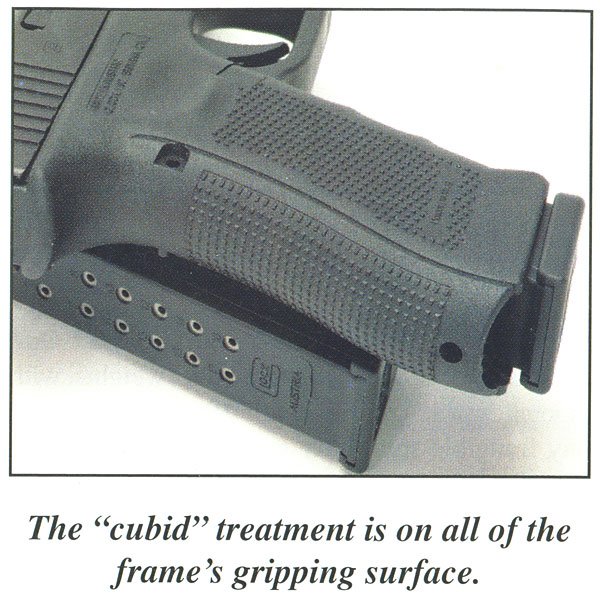
The RTF (Rough Textured Frame) surface treatment has been modified, making the spike-like projections dubbed “polymid” in earlier versions smaller and not as sharp, and now termed “cubed.”
Also, the finger grooves are not as prominent as those found on a previous generation RTF2 Glock 19. The rectangular magazine catch remains grooved, but has been enlarged and, then, lengthened rearward.
The catch is also reversible and changing it is easily done by simply reversing the release and reinstalling the magazine catch retaining spring.
Not affected are the dimension of the dustcover accessory rail and the extractor which continues doing double duty by functioning as a loaded chamber indicator.
Next, and, for me, much more significant, is the 4th Gen pistol uses a version of the dual captive recoil spring found in GLOCK’s subcompact models.
Grips
When looking at the interchangeable grips, I thought this modification was well overdue, since companies such as Smith & Wesson, Ruger, SIG SAUER and the Heckler & Koch VP9 all offer grip altering options.
Adding to the need to have this option is the fact that this requirement is finding its way into official military and law enforcement agencies’ Request For Bids (RFB) to supply new handguns.
For example, sometime prior to 2010, a U.S. federal agency included this specification in their RFBs. Forward-thinking GLOCK has a Gen4 Model 22 in .40S&W ready to go.
When I examined the additional backstraps of my sample Gen4 Glock 17, I looked to see how well (or not) the attachment was designed, as I could foresee it shifting or coming off at the worst possible time.
GLOCK did its homework. The lower edge of the backstrap has a sturdy lip hooking over the opening in the lower frame and is secured at the top rear of the frame by a longer replacement trigger housing pin (supplied), using the disassembly tool (also supplied). Both backstraps fit snugly to the frame.
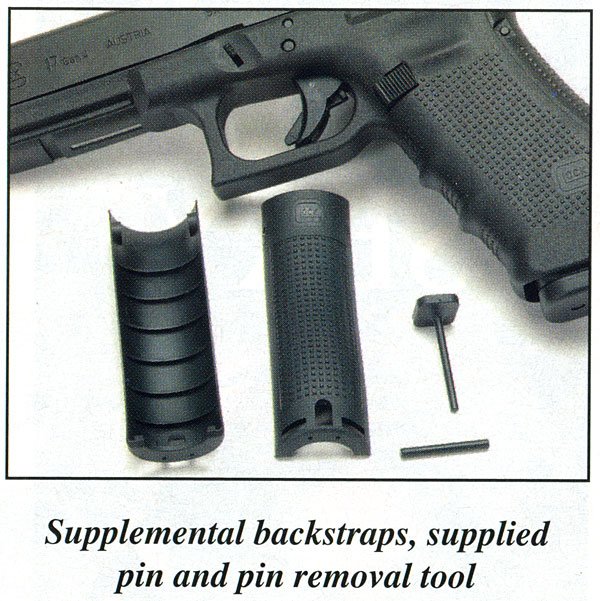
The two backstraps are marked, respectively, “M” (2mm) and “L” (4mm). By adding the “M” marked backstrap, you move up to a standard frame, while the “U’ backstrap creates the size of a large frame. With either, you can still use the lanyard attaching hole in the frame, as the backstraps have a matching opening.
To install, you simply remove the trigger housing pin with the supplied disassembly tool, then select one of the two units supplied and insert the corresponding longer trigger housing pin.
The nice “problem” here is that I find I like the SF grip very much. Also. I have historically shot standard and large frame guns equally well. I did shoot with both optional backstraps and they stayed put.
Realistically, they need long-term use and abuse for a proper evaluation. I suspect any “field” testing will be done by end-users – those who have expressed the concerns this alteration is supposed to address.
(Ed. note: The years of hard use by police, military and armed citizens have proved the system works perfectly.)
This grip option will also help address complaints from some who, having failed to pass a required course of fire. claimed their reason for failure was due to the gun not fitting their hand size properly.
(Ed. note: Notwithstanding the author’s condescension toward inexperienced shooters, fitting the pistol to the shooter’s hand is one of the best, and easiest, things an instructor can do to improve a shooter’s capability to succeed with equipment alone.)
Dual Spring System
I also wondered as to the “why” and “how” of the recoil spring system. I strongly suspect this is a result of GLOCK’s ongoing effort to make a Model 22 in .40S&W which will not malfunction regardless of the ammunition used – with or without the addition of the now almost ubiquitous lights and lasers hung on the gun’s dustcover.
The problem, as I see it, is the frame flexes when the gun is shot and this distortion is a large factor in how the gun operates. Changing ammunition and hanging a weight on the frame certainly can change this dynamic and can result in the worst possible malfunction – episodic and not repeatable on demand.
In short, GLOCK was forced into playing “WhacAMole.” Changing the recoil spring system affects the interaction of slide and frame, so reverting to a version of the dual captive recoil spring used in the subcompact GLOCKs might just be the definitive cure.
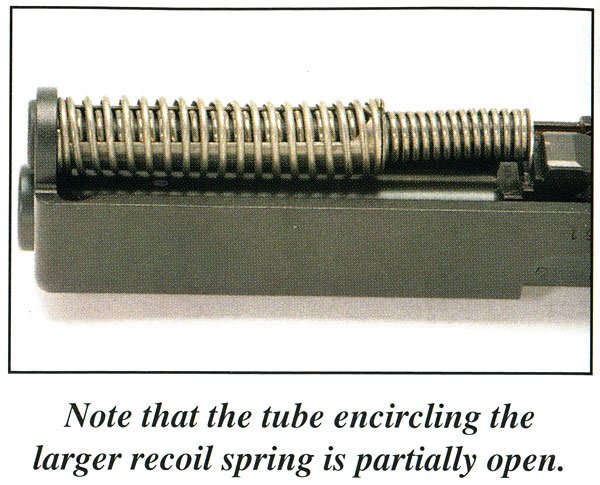
The new system is heavier and, for me, does decrease felt recoil – even in 9x19mm. Also, and contrary to Internet opinions, the heavier system did not interfere with shooting the low power 9x19mm ammunition I had on hand which included Federal Premium American Eagle and Remington UMC 115-grain bullet weights, with velocities which run about 1050 fps. (I did not have any frangible stuff.)
My non-scientific opinion is that I think, GLOCK has really done its homework, as I said before. Any determination of success or failure will only be forthcoming from multiple end-users.
One final thought about this: The new unit should double or triple the number of rounds which can be fired before spring replacement is even recommended.
What I Don’t Like
I did find one and a half downsides to this change. The most obvious is that more strength is required to manipulate the slide. (I would not bet against this being the next excuse for the aforementioned “qualification” failures.)
The “half’ problem is that the gun is slightly more difficult to reassemble, with more care needed to ensure the recoil spring unit is exactly centered against the barrel abutment when reinstalling the slide. (Late-breaking news: A reliable source told me there is a strong possibility that the spring weight for this model will be decreased, based on reports of the slide failing to fully cycle with one or two brands of ammunition. No further details were forthcoming as of this writing.)
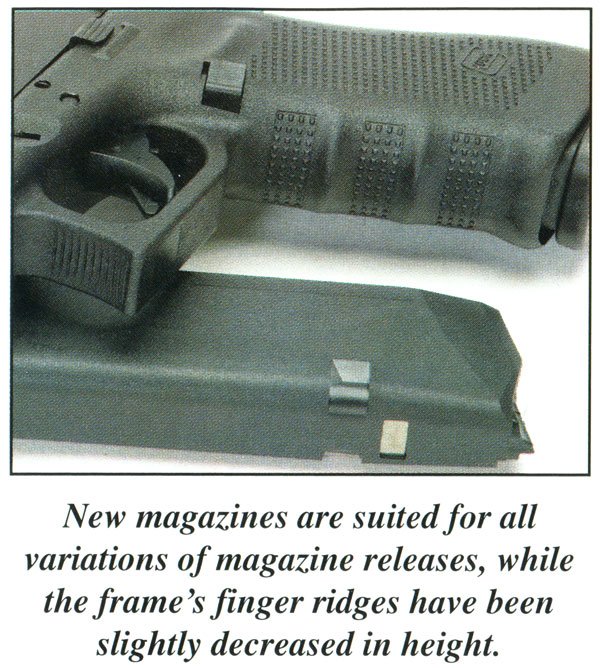
I did note two other changes. There’s a vertical cut in the left rear of the frame just forward of the left rear guide rail and the forward lower arm of the trigger bar is now notched below the trigger spring attachment opening. I suspect the vertical cut is to allow installing a Radio Frequency Identification (RFID) tag; for example, for inventory or the round count. The notch controls trigger spring movement at its attachment point and less flexing should decrease breakage at this point. As to parts compatibility, a new, updated GLOCK Armorer’s Manual is the best way to go.
The Rest of the Story
The rest of the Gen4 Glock 17 gun remains standard GLOCK with fixed sights. The square notch, white outlined rear sight is dovetailed into the slide for windage adjustments, with additional sight heights available for elevation changes.
The front sight is pinned in and has a white dot in its face. Night sights are a (U.S.) factory option. The extractor also serves as a loaded chamber indicator and the smooth-faced Safe Action Trigger pull measured six pounds. (Various trigger weight options exist; again, in the U.S.)
The magazine is constructed to allow for ambidextrous or reversible release. All other dimensions and metal treatments have not changed. The Gen4 ships (in the U.S.) with three magazines; a magazine loader; and a cleaning rod and brush — all in a lockable polymer storage case.
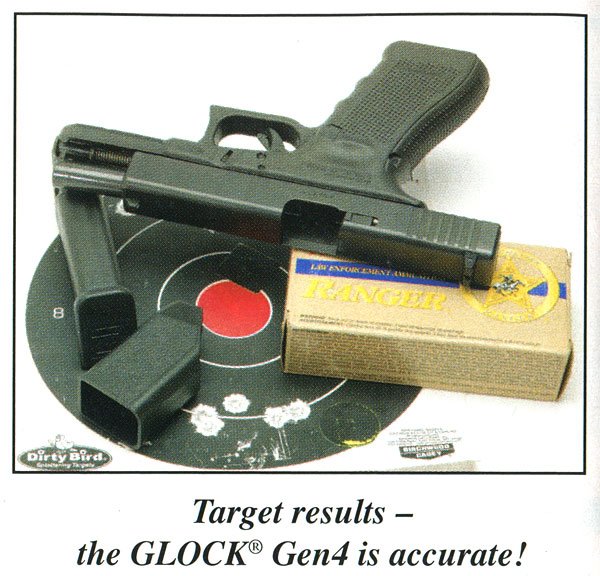
Range Results
In repeated range visits, I found my ability to shoot well (or not) was not affected at all by the shorter SF frame. To put a sharp point on this, I had completely put the backstrap options out of mind until I came to write this review.
On my next range trip, I did shoot with both and they did nothing good or bad to my gun manipulation and shooting results.
Shooting seated and supported, I managed five shot groups from 1.5 inches to four inches at 25 yards with the gun shooting to point of aim. The two backstraps are now back in the GLOCK case, where I suspect they will never again see the light of day.
In review, the Gen4 GLOCK 17 is a winner for me — so much so that I bought it and I’m strongly moving toward selling the two First and Second Generation Model 17s I already own!
This article is a contribution from Police & Security News. P&SN is a bi-monthly law enforcement magazine that is packed with training articles and gear reviews for the patrol officer. P&SN is a valued supporter of BlueSheepdog and the Blue Crew. The author’s views are not necessarily those of the BlueSheepdog.com editorial or writing staff.
